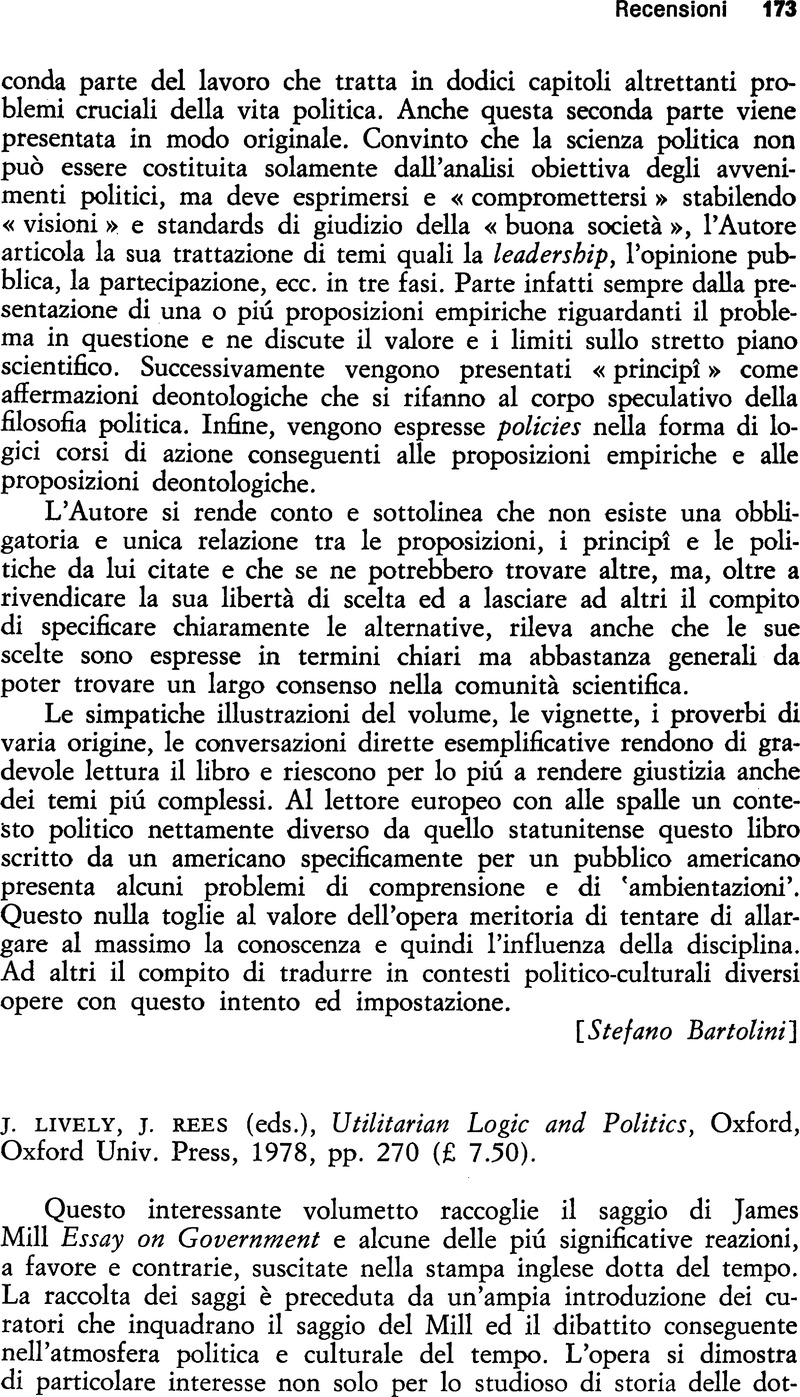- Lively Logic Customer Service
- Lively Logic Download
- Suite Logicielle Lively
- Lovely Logics Of Life
- Lovely Logics
Jan 08, 2014 Logic Puzzle: 1-25 Number Grid 32; Code Cracker! XLI 17; Code Cracker! XIII 6; Truthtellers, Liars, and Alternators Logic Puzzle 5; Logic Puzzle: 1-25 Number Grid II 4; Crazy Number Logic Puzzle III 3; Code Cracker! XXXVII 2; Lively Letters Logic Puzzle II 1; Code Cracker! Apr 07, 2011 Lively Logic Thursday, April 7, 2011. No Hope Lost (Poem) I burry my sins in a casket I 1-8-7 all my bad habbits I know God's grace is fantastic. Aug 26, 2020 Test your logic with 25 logic puzzles, including easy word logic puzzles for kids, and hard logic puzzles for adults. Solve these word problems, with answers included.
196 Logic Puzzles; 178 Math Riddles; 888 Medium Riddles; 187 Riddles for Adults; 285 Short Riddles; 6 Video Riddles; 321 What Am I Riddles; 451 What is it Riddles; 52 Who Am I Riddles; 23 Who is it Riddles. Lively Logic helps you effectively convey the insights in your data. Sort and filter the data in your graphs, and explore different views by swapping one field for another. Focus your audience’s attention by adding labels or highlighting important values. Illustrate trends or relationships using best-fit curves.
I 1-8-7 all my bad habbitsI know God's grace is fantastic,
But I'm changing my ways now
Because I don't want to 'wait in traffic'
And yes, God's will is massive,
But we all need change; drastic!
Walking in the dark makes it clear to see
This is not the life I want to remain
God's Word I must obtain.
Consistancy in the light, yes it's a strain
But love, trust, hope and peace I will gain.
I shine in a crowd
Lively Logic Customer Service
My loved ones are proudMy Lord will forever keep me endowed.
My prayers are loud and my compassion is manifest
It's simply that life is dearest
And what God gave me I am giving to the rest
I will never lose hope, I just ignore the
Lively Logic Download
fleshI will overcome the test because I know Hell
 is under my legs
is under my legsBut God begs
'You can't give up, you are unlike the rest'
AR 00-1(4)
EFFECTIVE/PUBLICATION DATE: 1/12/2000
Acquiescence Ruling 00-1(4)
Issue:
Whether, in making a disability determination or decision on a subsequent disability claim with respect to an unadjudicated period, the Social Security Administration (SSA)[1] must consider a finding of a claimant's residual functional capacity or other finding required under the applicable sequential evaluation process for determining disability, made in a final decision by an Administrative Law Judge (ALJ) or the Appeals Council on the prior disability claim.
Statute/Regulation/Ruling Citation:
Sections 205(a) and (h) and 702(a)(5) of the Social Security Act (42 U.S.C. 405(a) and (h) and 902(a)(5)), 20 CFR 404.900(a), 404.957(c)(1), 416.1400(a), 416.1457(c)(1), Acquiescence Ruling (AR) 94-2(4) (rescinded).
Circuit:
Fourth (Maryland, North Carolina, South Carolina, Virginia, West Virginia)
Albright v. Commissioner of the Social Security Administration, 174 F.3d 473 (4th Cir. 1999) (Interpreting Lively v. Secretary of Health and Human Services, 820 F.2d 1391 (4th Cir. 1987)).
Applicability of Ruling:
This Ruling applies to determinations or decisions at all levels of the administrative review process (i.e., initial, reconsideration, ALJ hearing and Appeals Council).
Lively[2]
Description of Case:
In a decision dated October 19, 1981, an ALJ found that the plaintiff, Mr. Lively, was not disabled under Rule 202.10 of the medical-vocational guidelines, 20 CFR Part 404, Subpart P, Appendix 2, and denied his application for disability insurance benefits. In applying Rule 202.10, the ALJ found that Mr. Lively had the residual functional capacity for light work. The decision that Mr. Lively was not entitled to disability insurance benefits became the final decision of SSA and was affirmed by the district court.
The plaintiff filed a second application for disability insurance benefits on December 14, 1983. After holding a hearing, an ALJ concluded that the plaintiff was not entitled to disability insurance benefits. The ALJ determined that Mr. Lively retained the functional capacity for the performance of work activity at any exertional level on and prior to December 31, 1981, the date his insured status expired. The ALJ did not discuss in his decision the 1981 finding by another ALJ that the plaintiff had the residual functional capacity to do only light work. This decision became the final decision of SSA and was appealed to the district court. The case was referred to a United States Magistrate who found that the evidence before the ALJ on the plaintiff's 1983 application was sufficient to sustain SSA's decision that the plaintiff was not disabled as of December 31, 1981. The district court adopted the Magistrate's Report and Recommendation. Mr. Lively then appealed to the United States Court of Appeals for the Fourth Circuit.
Holding:
Suite Logicielle Lively
The Fourth Circuit reversed and remanded the decision of the district court. The court stated that:
Congress has clearly provided by statute that res judicata prevents reappraisal of both [SSA]'s findings and ... decision in Social Security cases that have become final, 42 U.S.C. § 405(h), and the courts have readily applied res judicata to prevent ... [SSA] from reaching an inconsistent result in a second proceeding based on evidence that has already been weighed in a claimant's favor in an earlier proceeding.
The court noted that the plaintiff became 55 years of age two weeks after the ALJ, in connection with the first application for benefits, found that Mr. Lively was limited to light work. The court further noted that a person with the plaintiff's education and vocational background who is 55 years of age or older and limited to light work would be considered disabled under Rule 202.02 of the medical-vocational guidelines, 20 CFR Part 404, Subpart P, Appendix 2. The court found it inconceivable that Mr. Lively's condition had improved so much in two weeks as to enable him to perform medium work. Accordingly the court held:
Principles of finality and fundamental fairness ... indicate that ... [SSA] must shoulder the burden of demonstrating that the claimant's condition had improved sufficiently to indicate that the claimant was capable of performing medium work. ... [E]vidence, not considered in the earlier proceeding, would be needed as an independent basis to sustain a finding contrary to the final earlier finding.
Albright

Description of Case:
William Albright applied for disabilityinsurance benefits and Supplemental Security Income on April 17,1991, alleging that he had been unable to work since March 31,1990, because of neck and back injuries. The claims were deniedinitially and upon reconsideration. In a decision issued on May28, 1992, that denied benefits, an ALJ determined Mr. Albright'stestimony about the intensity of his pain was not credible andfound that his impairment had been 'not severe'[3] since at leastJanuary 3, 1991. Mr. Albright did not appeal this decision.In November and December 1992, Mr. Albright filed subsequent applications for disability insurance benefits and Supplemental Security Income. These claims were denied initially and again upon reconsideration. On October 26, 1994, an ALJ found that Mr. Albright's prior claims had been denied at the second step of the sequential evaluation process and that there was an absence of new and material evidence regarding the severity of his impairment. Accordingly, the ALJ applied AR 94-2(4) which was published on July 7, 1994, and found that Mr. Albright was not disabled.[4]
After the Appeals Council denied the claimant's request for review, he sought judicial review. The district court referred the case to a magistrate judge who found that SSA had interpreted the holding in Lively too broadly in promulgating AR 94-2(4). The district court adopted the magistrate judge's findings and conclusions, and remanded Mr. Albright's claims for de novo consideration by SSA. After the district court's denial of SSA's motion to alter or amend the judgment, SSA appealed to the United States Court of Appeals for the Fourth Circuit.
Holding:
The Fourth Circuit affirmed the district court's decision and held that AR 94-2(4) was not an accurate statement of the holding in Lively. The court further stated that Lively was a 'rare case' involving 'a finding that initially disqualified the claimant from an award of benefits [which later] convincingly demonstrated his entitlement thereto as of two weeks hence.' The court then stated that '[u]nlike the [Acquiescence] Ruling at issue in ... [Albright's] case, however, the prior adjudication in Lively — though highly probative — was not conclusive.' The court further held that:
We therefore disagree with the Commissioner that Lively abrogated the established law of preclusion.... At its essence, Lively really has very little to do with preclusion. Although we discussed the doctrine of res judicata generally, and more particularly its incorporation into the Social Security Act through 42 U.S.C. § 405(h), Lively is not directly predicated on the statute, but on '[p]rinciples of finality and fundamental fairness drawn from § 405(h).' [Lively, 820 F.2d at 1392] (emphasis added). The distinction is subtle, but important.
Rather than signaling a sea change in the law of preclusion, the result in Lively is instead best understood as a practical illustration of the substantial evidence rule. In other words, we determined that the finding of a qualified and disinterested tribunal that Lively was capable of performing only light work as of a certain date was such an important and probative fact as to render the subsequent finding to the contrary [relating to a period that began two weeks later] unsupported by substantial evidence. To have held otherwise would have thwarted the legitimate expectations of claimants...that final agency adjudications should carry considerable weight. [Footnotes omitted.]
The court observed that the prior residual functional capacity finding in Lively was 'highly probative' of the claimant's residual functional capacity for the period that began two weeks after the previously adjudicated period because, absent evidence to the contrary, 'a claimant's condition very likely remains unchanged within a discrete two-week period.' The court indicated that the probative value of a prior finding relating to a claimant's medical condition will likely diminish 'as the timeframe expands,' and that '[t]he logic so evident in Lively . . .applies with nowhere near the force in Albright's situation' where 'the relevant period exceeds three years.'

The court also stated that SSA's 'treatment of later-filed applications as separate claims is eminently logical and sensible, reflecting the reality that the mere passage of time often has a deleterious effect on a claimant's physical or mental condition.'
Statement as to How Albright Differs From SSA's Interpretation of the Regulations
In a subsequent disability claim, SSA considers the issue of disability with respect to a period of time that was not adjudicated in the final determination or decision on the prior claim to be a new issue that requires an independent evaluation from that made in the prior adjudication. Thus, when adjudicating a subsequent disability claim involving an unadjudicated period, SSA considers the facts and issues de novo in determining disability with respect to the unadjudicated period. SSA does not consider prior findings made in the final determination or decision on the prior claim as evidence in determining disability with respect to the unadjudicated period involved in the subsequent claim.
SSA interprets the decision by the United States Court of Appeals for the Fourth Circuit in Albright to hold that where a final decision of SSA after a hearing on a prior disability claim contains a finding required at a step in the sequential evaluation process for determining disability, SSA must consider such finding as evidence and give it appropriate weight in light of all relevant facts and circumstances when adjudicating a subsequent disability claim involving an unadjudicated period.
Explanation of How SSA Will Apply The Albright Decision Within The Circuit
This Ruling applies only to disability findings in cases involving claimants who reside in Maryland, North Carolina, South Carolina, Virginia or West Virginia at the time of the determination or decision on the subsequent claim at the initial, reconsideration, ALJ hearing or Appeals Council level. It applies only to a finding of a claimant's residual functional capacity or other finding required at a step in the sequential evaluation process for determining disability provided under 20 CFR 404.1520, 416.920 or 416.924, as appropriate, which was made in a final decision by an ALJ or the Appeals Council on a prior disability claim.[5]
Lovely Logics Of Life
When adjudicating a subsequent disability claim arising under the same or a different title of the Act as the prior claim, an adjudicator determining whether a claimant is disabled during a previously unadjudicated period must consider such a prior finding as evidence and give it appropriate weight in light of all relevant facts and circumstances. In determining the weight to be given such a prior finding, an adjudicator will consider such factors as: (1) whether the fact on which the prior finding was based is subject to change with the passage of time, such as a fact relating to the severity of a claimant's medical condition; (2) the likelihood of such a change, considering the length of time that has elapsed between the period previously adjudicated and the period being adjudicated in the subsequent claim; and (3) the extent that evidence not considered in the final decision on the prior claim provides a basis for making a different finding with respect to the period being adjudicated in the subsequent claim.
Where the prior finding was about a fact which is subject to change with the passage of time, such as a claimant's residual functional capacity, or that a claimant does or does not have an impairment(s) which is severe, the likelihood that such fact has changed generally increases as the interval of time between the previously adjudicated period and the period being adjudicated increases. An adjudicator should give greater weight to such a prior finding when the previously adjudicated period is close in time to the period being adjudicated in the subsequent claim, e.g., a few weeks as in Lively. An adjudicator generally should give less weight to such a prior finding as the proximity of the period previously adjudicated to the period being adjudicated in the subsequent claim becomes more remote, e.g., where the relevant time period exceeds three years as in Albright. In determining the weight to be given such a prior finding, an adjudicator must consider all relevant facts and circumstances on a case-by-case basis.
Lovely Logics
[1] Under the Social Security Independence and Program Improvements Act of 1994, Pub. L. No. 103-296, effective March 31, 1995, SSA became an independent Agency in the Executive Branch of the United States Government and was provided ultimate responsibility for administering the Social Security and Supplemental Security Income programs under titles II and XVI of the Social Security Act. Prior to March 31, 1995, the Secretary of Health and Human Services had such responsibility.
[2] The decision of the Fourth Circuit in Albright (the subject of this AR) was based, in part, upon the panel's interpretation of the Fourth Circuit's prior decision in Lively. Accordingly, the following discussion of that earlier case is provided as background material.
[3] 20 CFR 404.1520 and 416.920 provide a sequential evaluation process for evaluating disability. These regulations provide at step two that if an individual does not have any impairment or combination of impairments that is 'severe,' the individual is not disabled.
[4] In an action that was uncontested on appeal and later termed 'entirely proper' by the Fourth Circuit in Albright, the ALJ dismissed Mr. Albright's claims insofar as they related to the period up to and including May 28, 1992, the date of the prior ALJ's decision on Mr. Albright's earlier claims.
[5] In making a finding of a claimant's residual functional capacity or other finding required to be made at a step in the applicable sequential evaluation process for determining disability provided under the specific sections of the regulations described above, an ALJ or the Appeals Council may have made certain subsidiary findings, such as a finding concerning the credibility of a claimant's testimony or statements. A subsidiary finding does not constitute a finding that is required at a step in the sequential evaluation process for determining disability provided under 20 CFR 404.1520, 416.920 or 416.924.

Comments are closed.